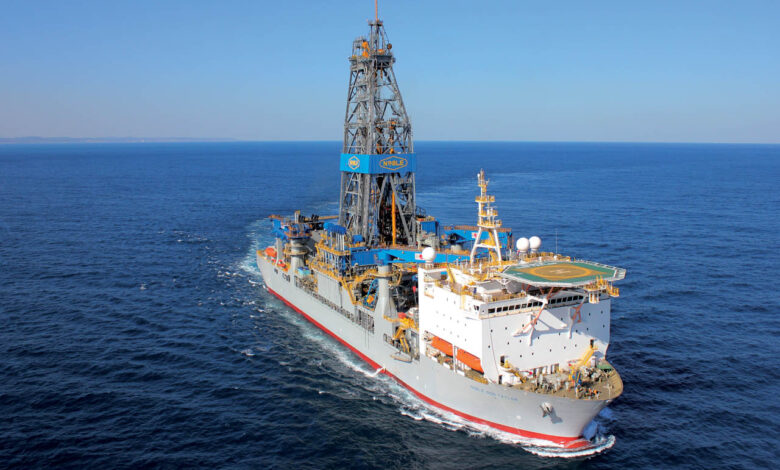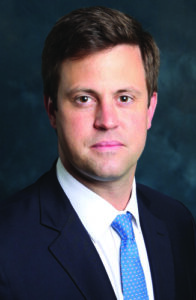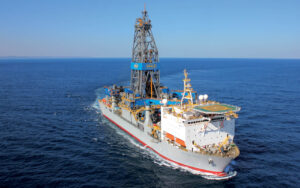Facing a glum market outlook, offshore drilling contractors must embrace bold thinking to survive

Noble’s Robert Eifler: Automation, digitalization, and collaboration between operators and contractors offer best opportunities for performance improvement
By Stephen Whitfield, Associate Editor
Robert Eifler is President and CEO of Noble Corp.
Looking across your entire rig fleet, what do you see as the biggest challenges that you face as a drilling contractor?

Certainly, 2020 was a year where we faced several major challenges, some more near-term and others more long-term. COVID-19 has been an unbelievable challenge for our business and our industry. For one, you have to deal with the logistical challenges of trying to run a global business in the midst of this pandemic. We have, by and large, kept our rigs running, but it’s taken a Herculean effort by everyone in our company and, most particularly, the men and women working offshore to do that. We’ve had a lot of people who have needed to stay offshore for well over their normal work schedules. They’ve had to go to work not knowing that there would be clear transportation home, and it’s taken a really big commitment.
On top of that, you have the safety challenge. I’m very proud of the workforce at Noble, but I also think that the industry at large has really stepped up to the challenge and maintained a focus on process safety through the entire pandemic.
As we’ve dealt with all of this, we’ve also been faced with a market outlook that I would argue is less certain than anyone has experienced previously. Operators have reduced their spending, and the signals they’re sending suggest that they don’t have plans to significantly increase that anytime soon. Utilization is key right now. In the midst of everything, we’re having to make difficult decisions on cold-stacking and scrapping assets. Having to manage through all of that is a challenge, to put it lightly.
Increases in energy demand and oil prices can help our industry recover, but those factors are out of our control. What do you see as the key things drilling contractors can do to help achieve a market recovery? Is cold-stacking/scrapping the only lever we have to pull?
There’s no doubt that the reduction of supply is, by far, the main lever, but it’s not the only thing. If you think about it, we’ve been in a downturn for six years now, but during the first four-and-a-half years of that downturn, offshore drillers made commercial decisions based on the idea that an upturn was coming relatively soon. I don’t think anyone can do that today, not only because they don’t have the cash to do it but also because there is no investor support to make these sorts of decisions.
I do think there are some other things that are likely to happen. Consolidation is very likely to pick up steam in 2021. If there is a wave of M&A activity, I think breakeven dayrates will come down, which will help the whole offshore industry. Also, having fewer contractors means the surviving companies will have better opportunities to win the trust of more E&Ps.
You mentioned that, in effect, the industry never fully recovered from the previous downturn that started in 2014-2015. How much do you think that’s affected our current economic landscape?
It’s had a massive effect. You can see that through the wave of restructuring that has already been announced and the actions that drilling contractors have taken. This is not an issue that’s limited to offshore drilling contractors. This is something that we’re seeing across the oilfield services space. I really think that the next few years are going to be very different; in some ways, they will be transformative.
Drilling contractors will have to be bold to be successful going forward. Everyone who has a stake in offshore drilling understands that we’ll have to make real changes to our business in order to be successful, and that includes the operators.

Where do you see the biggest opportunities for drilling contractors to make step changes, rather than incremental changes, in their drilling performance and cost reductions in the coming years?
I think the next few years are really going to be characterized by automation and digitalization. We’ve been through a massive build cycle offshore. Everyone knows we’re very unlikely to build many rigs in the near term. And yet, here we are at a place where we, as an industry, need to get more efficient in order to be competitive on a global scale and to be competitive with unconventional production.
While investments will remain curtailed generally, of those that are made, I think you’ll see some of them target efficiency improvements. Some of them will be driven by drilling contractors, and a number of them will be driven by the different technologies of the operators. Across the board, those types of investments are going to characterize the biggest changes over the next five to 10 years.
Another thing to watch closely is the contracting model. I do think that you’re going to see a shift toward contracting models that really drive collaboration and provide incentive for the various companies to work together to deliver a more efficient operation.
What changes to the dayrate model would you like to see in the future?
The dayrate model is tricky because, while its flaws are obvious, it has this funny way of persisting. People have been talking for five years now about finding something that makes more sense, and yet the dayrate model continues.
There are different ways to do it. At a minimum, we need broader transparency surrounding KPIs on the operations that contractors directly control. Contractors will likely take a more aggressive commercial approach to these activities, and we’re very supportive of that. On the other end of the spectrum, you hear rumblings about footage or turnkey contracts, where you’re talking about a bigger shift in risk/reward. A return to those kinds of contractual models is less likely, in my opinion. However, a model that provides an incentive for all the participants to drill a well more efficiently is strongly desired by everyone in the offshore space, including us at Noble.
We have great people and great rigs, and we’d like to find a mechanism that allows us to share the benefit of the efficiencies we provide.
We know that collaboration between operator and drilling contractor is needed to achieve performance improvements. From your experience, where do you find collaboration to be easiest achieve to between the two parties, and where is it still hard to find alignment?
The assets we’re running today are extremely complicated. It is a level of complexity that’s different from the past, and managing that complexity requires extensive collaboration.
A lot of people have talked about the efficiencies that the onshore unconventional plays have realized in the past decade, but what we’re trying to do offshore is completely different. We don’t have the opportunity to drill thousands of wells that are nearly identical and with generally lower pressure. We are in a marine environment, and oftentimes we’re also dealing with high pressures downhole. We’re having to manage constant risk on complex and dissimilar wells, which makes it much more difficult to apply efficiencies from well to well.
It’s the collaboration between operators and all the different vendors, including drilling contractors, that really drives efficiency offshore. One thing we’re seeing now is an abundance of short-term contracts. Operators are less inclined to commit to multi-year programs, and while they still want to drill multiple wells, the same program is now divided into several shorter contracts. To achieve better operational continuity with this approach, I think you’ll see – and maybe we’re already seeing – operators turn to preferred contractors to learn together and try to drive efficiency going forward.
When an oil company and a drilling contractor know each other, they get to know each other’s systems and they get to understand each other. That drives some level of efficiency.

Even before this downturn began last year, drilling contractors had been working to adopt digital/automation technologies. Do you believe this downturn has been a setback to that process, or do you believe it’s accelerating the process?
This is an area where investment is required. Money is tight with all service companies and E&Ps right now, particularly with regard to R&D. With budgets as tight as they are, investment in early-stage technologies has been drastically reduced or deferred. Also, the more costly technologies requiring us to take time out of service on rigs or have high installation costs have been delayed.
However, I think the downturn has also sped up the adoption of other technologies. You look at remote operations and virtual applications. We’re seeing remote operation from directional drillers, mud engineers, people who are staying onshore and running the activities from there. We’re seeing service providers inspecting equipment remotely instead of putting someone on a helicopter and flying offshore. I think it has also sped up the adoption of technology around efficiencies.
We’ve seen both operators and investors place an increasing emphasis on ESG. In fact, operators may include strict emissions limits in rig tenders in the future, or they may already be doing so now. What should drilling contractors do to prepare for this?
ESG has commanded intense focus here in the last 12 to 24 months globally, and it’s really shifted within the investor base, where a lot of organizations are now making it not only a priority but a price of entry if they’re going to consider investment.
The term ESG is also sometimes associated with political agendas, but the way I like to think about it is not in any political sense because offshore drillers are likely never going to fit into the mold of someone who has a progressive green agenda. That’s just the reality of our business, and that’s not how I think about ESG. I think of it as something more basic. It’s simply doing the right thing in relation to environmental, social and governance issues.
In fact, I think a lot of companies in our space have been doing the right thing for a very long time, and certainly I would say that about Noble. Protecting the environment, safety, taking care of our people and accepting different cultures globally are all things we’ve been doing for years. There are all sorts of different standards that contractors have adopted, like our spill response and spill recording.
Our commitment to ESG remains unwavering, but one thing that you will see is a different approach that starts with transparency. We’re going to talk more about what we’re doing, including how we communicate ESG-related goals.
Over the last several years, we’ve improved significantly in many areas, like with offshore safety and spills, and we need to continue to expand our efforts. Emissions are obviously a key part of ESG, and we’ve been publishing our emissions for some time.
What you are starting to see is people setting emissions-related goals to drive improvement in that area, and Noble is certainly committed to that effort. That’s just the right thing to do. This is just as important for operators, as well, and a lot of the transparency has to occur between all parties involved in delivering a well. I think you’ll see more collaboration around ESG generally.
We’re going to have to get better together.
Analysts have forecast that E&Ps will shift away from offshore and deepwater projects in favor of renewables and other new energy projects in the coming years. What is your take on this, and do you think this means we’ll be seeing a continuous “downsizing” of the offshore industry going forward? What could we do to make our business more valuable?
I believe oil and gas will be a key piece of the energy mix for many decades to come. It is less clear today that it’s going to be a significant growth industry, though predictions about the future in our business have been wrong many times before. Obviously, the pressures are different today than they have been in the past, but our business has an important role to play. That includes all of the offshore projects, including complicated deepwater projects.
We’re managing our business for a relatively flat future, and I think operators are managing their businesses similarly. That’s just the reality of the outlook right now, and we are figuring out how to make it work. At the end of the day, if you look at the role of renewables in the energy mix, even factoring in their best growth rate, you realize that we’re going to have a viable business for a long time to come. DC




